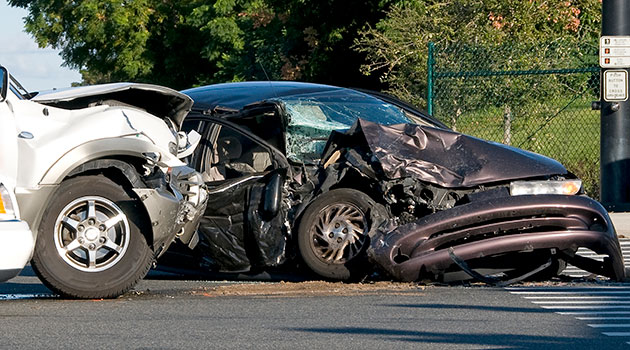For almost 45 years, Michigan has been conducting a grand experiment in altruism, but its cost may be more than the Great Lakes State bargained for.
Michigan has long been home to the nation’s costliest car insurance rates, due in part to an infamous no-fault policy requiring each motorist to buy into more expensive plans. But a new group of bills up for debate in the statehouse could end the expensive ordeal for millions of residents—reducing annual auto insurance bills by hundreds of dollars or more.
Detroit Mayor Mike Duggan has likened the crusade to a “civil rights issue,” and the bills have a long list of enthusiastic backers who say they would bolster choices for motorists and streamline a bloated system.
Still, Michigan’s insurance infrastructure has been built around the policy for decades, and others argue the legislative tweak would take a wrecking ball to the design, which has long protected some of the state’s most vulnerable residents: the catastrophically injured.
Without everyone pitching in extra, the state will no longer be able to guarantee lifetime medical benefits for those who are critically injured in auto accidents there, leaving victims to fend for themselves in an increasingly unstable world of health insurance.
While the new proposal offers residents the freedom of choice—does it let them skip out on the responsibilities of driving?
All for One
The bills in question, collectively called the Fair, Affordable Auto Insurance Package, focus on a type of no-fault insurance called personal injury protection (PIP), which covers costs in an accident regardless of who caused the incident.
Michigan is the only state in the nation that requires drivers to carry an unlimited PIP policy, which can be used to pay for a lifetime’s worth of medical bills racked up after an injury-causing accident—including anything from emergency room visits, doctor appointments, physical therapy sessions, wage loss, and in-home care.
But that comprehensive coverage comes at a cost. In Detroit alone, the policy’s price makes up roughly 44% of car insurance rates, according to Duggan, who was deeply involved in the state’s health care system as CEO of the Detroit Medical Center before being elected mayor. (The 11 other states requiring PIP insurance cap the policies at much lower rates, leading to less costly plans.)
The bills take aim at the pricy policies, in part, by allowing consumers to opt out of them. Instead, drivers will be given a choice: maintain their current unlimited deal, or reduce their no-fault plans to cap coverage at either $500,000 or $250,000. (Motorists age 62 or older will be given a fourth option: opting out of the PIP insurance coverage altogether.)
Proponents say the measure could lower annual insurance rates—which can eclipse $3,000 per year for a single vehicle in Michigan—by as much as 50%, and that most residents would see at least a 20% reduction in their car insurance bills.
The Michigan Chamber of Commerce has also backed the idea, saying it could lead to more than $1 billion in annual savings for motorists and local businesses combined.
But some have expressed concern that the appearance of savings is a false one, as the costs of caring for the catastrophically injured would merely be passed off to a different program, one funded not just by motorists but by all taxpayers: Medicaid.
One for All

Without the built-in lifetime coverage of unlimited PIP plans to fall back on, Michigan accident victims would need to look elsewhere to cover their enduring medical costs—likely leading to a strain on the state’s healthcare system.
Anyone seriously hurt in an auto accident would have to piece together a coverage plan using a complicated combination of personal car and health insurance, with Medicaid available to kick in once that coverage is tapped out.
Ultimately, a shift in the no-fault plan could put Michigan taxpayers on the hook for an additional $150 million in annual Medicaid costs a decade after the legislation is passed, according to a report by the state’s House Fiscal Agency. (The Michigan Chamber of Commerce questioned the analysis, calling it “incomplete.”)
The state could also stand to lose between $20 million to $35 million in annual revenue in making the switch, as insurance companies pay state taxes on premiums, which would be reduced by the legislation.
And price controls included in the bills intended to curb Medicaid costs from rising too fast could lead to even less choice for accident victims, as they could put a financial squeeze on non-hospital-affiliated programs, like private rehab centers, which would also likely be hit with a dwindling patient count if fewer residents choose comprehensive insurance plans.
But should the extraordinary needs of the few outweigh the more consistent expenses of the many?
Greater than the Sum of Its Parts
The idea behind Michigan’s mandatory no-fault policy—passed into law in 1973—was to shorten the distance between accident victims and treatment centers, allowing motorists to pursue medical assistance right away through their own auto insurance, rather than relying on the policies of other drivers to cover their costs.
The system was legally tested in Michigan almost immediately after it was passed, but a 1978 state supreme court ruling ultimately protected and enshrined the plan. Still, the judgement declared that if no-fault insurance policies were to be a requirement, they would have to be available at “fair and equitable” prices.
In order to help stabilize those rates, the state created a means for the most expensive injury treatments to be covered, through a joint fund overseen by the Michigan Catastrophic Claims Association. The money is collected through annual fees issued to every motorist in the state—but that, too, could change under the new legislation.
Drivers who opt for capped coverage would also pay drastically less into the fund, with that fee declining until all deficits are paid off.
There are currently more than 16,000 residents of the state benefitting from the system, but in testifying on behalf of the legislation change, Duggan said the fund currently contains enough cash to cover the duration of their care—while new entrants would benefit from lower rates on medical services prescribed by the legislation.
Proponents of the plan also argue that the shift would hardly be seismic, with only about 0.2% of all accident-based injuries severe enough to qualify for aid from the association.
Still, those budgetary predictions pin a lot on how many drivers opt for full coverage moving forward. The system can only stay afloat if at least some are willing to cover their losses.
Removing the safety net of mandatory payments would make the promise of medical coverage in Michigan more of a gamble than a guarantee.
